Chicago Electric 63121 Auto Darkening Welding Helmet Owner's manual
- Category
- Bicycle accessories
- Type
- Owner's manual
This manual is also suitable for

Visit our website at: http://www.harborfreight.com
Email our technical support at: [email protected]
63121
Owner’s Manual & Safety Instructions
Save This Manual Keep this manual for the safety warnings and precautions, assembly,
operating, inspection, maintenance and cleaning procedures. Write the product’s serial number in the
back of the manual near the assembly diagram (or month and year of purchase if product has no number).
Keep this manual and the receipt in a safe and dry place for future reference. 20k
When unpacking, make sure that the product is intact
and undamaged. If any parts are missing or broken,
please call 1-888-866-5797 as soon as possible.
Copyright
©
2020 by Harbor Freight Tools
®
. All rights reserved.
No portion of this manual or any artwork contained herein may be reproduced in
any shape or form without the express written consent of Harbor Freight Tools.
Diagrams within this manual may not be drawn proportionally. Due to continuing
improvements, actual product may differ slightly from the product described herein.
Tools required for assembly an d se rv ic e may n ot b e in cl uded.
Read this material before using this product.
Failure to do so can result in serious injury.
SAVE THIS MANUAL.

Page 2 For technical questions, please call 1-888-866-5797. Item 63121
Table of Contents
Safety ................................................ 3
Specifications .................................... 5
Operation .......................................... 6
Maintenance and Servicing .............. 9
Parts List and Diagram .................... 10
Warranty .......................................... 12
WARNING SYMBOLS AND DEFINITIONS
This is the safety alert symbol. It is used to alert you to potential
personal injury hazards. Obey all safety messages that
follow this symbol to avoid possible injury or death.
Indicates a hazardous situation which, if not avoided,
will result in death or serious injury.
Indicates a hazardous situation which, if not avoided,
could result in death or serious injury.
Indicates a hazardous situation which, if not avoided,
could result in minor or moderate injury.
Addresses practices not related to personal injury.
SAFETY OPERATION MAINTENANCESPECIFICATIONS

Page 3For technical questions, please call 1-888-866-5797.Item 63121
IMPORTANT SAFETY INFORMATION
When using helmet, basic safety precautions should always be followed to
reduce the risk of personal injury and damage to equipment.
The warnings, cautions, and instructions discussed in this instruction manual cannot cover all possible
conditions and situations that may occur. It must be understood by the operator that common sense
and caution are factors which cannot be built into this product, but must be supplied by the operator.
Read all instructions before using this helmet!
WARNING
INHALATION HAZARD:
Welding and Plasma Cutting Produce
TOXIC FUMES.
Exposure to welding or cutting exhaust
fumes can increase the risk of developing
certain cancers, such as cancer of the
larynx and lung cancer. Also, some
diseases that may be linked to exposure
to welding or plasma cutting exhaust
fumes are:
• Early onset of Parkinson’s Disease
• Heart disease • Ulcers
• Damage to the reproductive organs
• Inflammation of the small intestine or
stomach • Kidney damage
• Respiratory diseases such as
emphysema, bronchitis, or pneumonia
Use natural or forced air ventilation and
wear a respirator approved by NIOSH to
protect against the fumes produced to
reduce the risk of developing the above
illnesses.
1. Do not use the Welding Helmet if the lens is
cracked, if the lens or sensors are dirty, or if
the lens or front retaining frame is loose.
2. Keep work area clean. Cluttered
areas invite injuries.
3. Observe work area conditions. Do not use
welding helmets in damp or wet locations.
Do not expose to rain. Keep work area well
lit. Do not use auto-darkening helmets in the
presence of flammable gases or liquids.
4. Keep children away. Children must never
be allowed in the work area. Do not let them
handle this helmet. Dress properly. Do not
wear loose clothing or jewelry. Keep your hair,
clothing and gloves away from moving parts.
5. Store idle equipment. When not in use,
helmets must be stored in a dry location
to inhibit rust. Always lock up helmets
and keep out of reach of children.
6. Dress properly. Do not wear loose clothing
or jewelry as they can be caught in moving
parts. Protective gear is essential to protect
against welding rays, some examples are: a
leather welding apron, welding sleeves, jeans
without cuffs, work boots. Wear restrictive
hair covering to contain long hair.
7. Use eye and ear protection. When welding,
wear ANSI-approved impact safety goggles under
the Welding Helmet. Wear a NIOSH-approved
respirator and hearing protection when welding.
8. Stay alert. Watch what you are doing, use
common sense. Do not weld when you are tired.
9. Check for damaged parts. Before using any
helmet, any part that appears damaged should be
carefully checked to determine that it will operate
properly and perform its intended function. Check
for alignment and binding of moving parts; any
broken parts or mounting fixtures; and any other
condition that may affect proper operation. Any
part that is damaged should be properly repaired
or replaced by a qualified technician. Do not use
the helmet if any switch does not operate properly.
10. Replacement parts and accessories. When
servicing, use only identical replacement parts.
Use of any other parts can render helmet ineffective,
possibly causing eye damage, and will void the
warranty. Only use accessories intended for
use with this helmet. Approved accessories
are available from Harbor Freight Tools.
11. Do not weld if under the influence of
alcohol or drugs. Read warning labels on
prescriptions to determine if your judgment
or reflexes are impaired while taking drugs.
If there is any doubt, do not weld.
SAFETYOPERATIONMAINTENANCE SPECIFICATIONS

Page 4 For technical questions, please call 1-888-866-5797. Item 63121
12. Maintenance. For your safety, service
and maintenance should be performed
regularly only by a qualified technician.
13. This helmet provides protection for intended
purposes only. There are certain applications
for which this helmet was designed. Do not
modify this helmet and do not use this helmet
for a purpose for which it was not intended:
a. The Welding Helmet is not suitable
for laser welding or Oxyacetylene
Welding/Cutting processes.
b. The Welding Helmet will not protect
against severe impact hazards.
c. The Welding Helmet will not protect against
explosive devices or corrosive liquids.
14. Use only at temperatures within the operating
range for your model as stated on the
specifications chart in this manual.
15. Maintain the helmet and lens correctly
to help ensure reliable protection:
a. Clean filter’s surfaces regularly. Keep sensors
and solar cells clean using a clean lint-
free tissue/cloth. Do not use any solvents
on filter’s screen or helmet components.
Protect filter from liquid and dirt contact.
Do not immerse the filter in water.
b. Should the Auto-Darkening Welding Helmet
not darken upon striking an arc, stop
welding immediately and have the helmet
checked by a qualified service technician.
c. Regularly replace the Front Lens Cover
if it becomes cracked, scratched,
pitted, or otherwise damaged.
d. Do not make any modifications to either the
Auto-Darkening Filter or the rest of the helmet,
other than those specified in this manual. Do
not use any replacement parts other than
those specified in this manual. Unauthorized
modifications and replacement parts will
void the warranty and expose the user to
the risk of personal injury. Do not open or
tamper with the Auto-Darkening Filter.
16. Do not place the Welding Helmet’s Auto-
Darkening Filter on a hot surface.
17. SEVERE PERSONAL INJURY and/or
BLINDNESS may occur if the user fails to
follow the aforementioned warnings and/or
fails to follow the operation instructions.
18. Maintain labels and nameplates on the tool.
These carry important safety information.
If unreadable or missing, contact
Harbor Freight Tools for a replacement.
SAVE THESE INSTRUCTIONS.
SAFETY OPERATION MAINTENANCESPECIFICATIONS

Page 5For technical questions, please call 1-888-866-5797.Item 63121
SPECIFICATIONS
Electrical Rating 120VAC / 60Hz / XA
Description Auto-Darkening Welding Helmet
Power Source Solar powered cells with battery
assistance (not rechargeable)
Operating Temperature 14° to 149° F
Resting Shade Shade # 4
Shade Range 9 to 13
UV/IR Protection Up to DIN 16 at all times
Lens Type ANSI Z87.1-2015 approved
Viewing Area 3-3/4" x 1-2/3"
Welding Protection
Types
For processes including MIG/Flux welding, stick
welding, TIG welding (10+ amps), plasma arc
welding/cutting and air carbon cutting. Not for
Laser Welding or Oxyacetylene Welding/Cutting
Lens Switching Speed (Clear to Dark) 1/25,000 second
Sensitivity Adjustment Min – Max adjustable
Grinding Mode Transforms helmet to grinding shield
without shade flickering
Power ON / OFF Fully Automatic
Shell Material High Impact-Resistant Plastic Polyamide Nylon
Storage Temperature - 4° to 158° F
Features Ratcheting headband with replaceable padded
sweatband, 2 independent arc sensors which
reduce the risk of blocked sensors during out-of-
position welding, variable Shade Control Knob
adjusts from #9 to #13 with a #4 resting shade,
Delay Control Knob, Sensitivity Control Knob
Shade Guide Chart
Welding
Process
Arc Current (Amperes)
10 20 40 80 125 175 250 300 450
5 15 30 60 100 150 225 275 350 500
Stick/Arc 9 10 11 12 13
Mild Steel MIG
(argon shielded)
10 11 12 13
Mild Steel MIG,
(CO
2
shielded)
10 11 12 13
Aluminum MIG 10 11 12 13
TIG 10 11 12 13
Flux Core 10 11 12 13
Plasma Cutting 11 12 13
Plasma Welding 9 10 11 12 13
SAFETYOPERATIONMAINTENANCE SPECIFICATIONS

Page 6 For technical questions, please call 1-888-866-5797. Item 63121
OPERATING INSTRUCTIONS
Read the ENTIRE IMPORTANT SAFETY INFORMATION section at the beginning of this
manual including all text under subheadings therein before set up or use of this product.
Function
The Auto-Darkening Welding Helmet is designed to protect the eyes and face from sparks, splatter, and
harmful radiation under normal welding conditions. The Auto-Darkening Filter automatically changes from
a clear state to a dark state when an arc is struck, and it returns to the clear state when welding stops.
Before Welding
The Auto-Darkening Welding Helmet comes ready
for use. Prior to first use, remove the protective film
from both sides of the lens (if not already done), adjust
the position of the headband, select the correct shade
number for the welding application, and test the helmet
for proper operation as described below.
Check the Front Lens Cover to make sure that
it is clean, and that no dirt is covering the two sensors
on the front of the Filter Cartridge. Also check the
Inside Lens Cover and the Lens Retaining Frame,
and make sure that they are secured in place.
Inspect all operating parts before each use for
signs of wear or damage. Any scratched, cracked,
or pitted parts should be replaced immediately
before using again to avoid severe personal injury.
Figure A
Shade Number and Grinding Mode Selection
1. Select the shade number required (see Shade
Guide Chart on the previous page) by turning
the Shade Control Knob. Be sure that the
shade number of the Welding Helmet is the
correct shade number for your application.
Note: If a selection of shades are recommended
for your application, try the darkest setting first.
2. The shade number can be set from 9 to 13 by
turning the Shade Control Knob until the arrow
points to the desired shade number. See Figure B.
3. Remember to check with the Shade Guide
Chart on the previous page to determine the
proper shade number for your application.
Important: Test the helmet auto-darkening filter lens
before welding. While wearing the helmet, briefly
strike an arc, keeping your face and eyes turned
slightly away, and to one side. The lens should darken
evenly when not directly facing the arc. If it does not
darken properly, do not use the Welding Helmet.
Grind Mode Setting
To change to Grinding Mode, rotate the
Shade Control Knob counterclockwise to
Grind. This turns off the shade function so
the helmet lens stays clear. Use this function
to provide protection while grinding.
CAUTION! Set the helmet to the proper
shade setting before welding again.
13
12
1
1
1
0
9
n
G
r
i
d
Shade
Control
Knob
Tension
Adjustment
Knob
Figure B
SAFETY OPERATION MAINTENANCESPECIFICATIONS

Page 7For technical questions, please call 1-888-866-5797.Item 63121
ANSI Z87.1-2015 Variable Shade 4/9-13 Item 63121
Adjusting Headband
Adjust the Headband so that the
helmet is seated securely on your head as
low as possible and close to your face.
Adjust the Headband width by turning the
Headband Adjustment Knob to make sure the
Front Lens Cover is aligned with your eyes.
Adjust the Headband height by tightening or
loosening the top strap until the Helmet fits snug on your
head. Once the Headband is properly adjusted, lower
the Helmet over your face until the proper angle is found.
Then turn the Tension Adjustment Knobs on either side
of the helmet, locking the helmet’s angle in place.
Tension
Adjustment
Knob
Headband
Adjustment
Knob
Top Strap
Figure C
Time Delay and Sensitivity
At the moment the welding operation
is started, the filter screen automatically
changes from clear to dark.
The operator can vary the amount of time it takes
the filter to return to a clear state and the sensitivity
of the sensor using the controls inside the helmet.
The Sensitivity setting changes the amount
of light needed to make the filter react.
Dark to Clear Adjustment Knob
Adjusts the speed the lens changes.
Minimum: 0.1 seconds
Maximum: 0.9 seconds
Sensitivity Adjustment Knob
Adjusts the amount of light needed
to activate the lens to darken.
Figure D
Solar Cells
This Welding Helmet utilizes high performance
solar cells as its power supply, and has a built-in 3V
lithium battery as power backup. No change of battery
is needed. Under normal welding conditions, users
can expect a battery lifetime of more than 6 years.
Shades
User-selectable variable shades from 9 to 13 are
adjusted with the Shade Control Knob (shade variable).
This product is in full conformity with related DIN, ISO,
EN379 safety standards and ANSI Z87.1-2015 standard.
Filters
The ultra high performance of UV and IR
Auto-Darkening filters provides the user’s eyes and face
with full protection against UV and IR radiation during
the entire welding process, even in clear state. The
UV/IR protection level is up to shade 16 at all times.
Magnifying Cheater Lens
To attach a magnifying cheater lens (sold
separately) to the inside of the helmet, slide the cheater
lens into place underneath the tabs located on the
lower right and left sides of the Lens Retaining Frame.
SAFETYOPERATIONMAINTENANCE SPECIFICATIONS

Page 8 For technical questions, please call 1-888-866-5797. Item 63121
Common Problems and Remedies
1. Irregular Darkening Or Dimming
a. Headband has been set unevenly on both sides of helmet (unequal distances from the eyes to filter’s lens).
b. Reset Headband to reduce difference in distances to filter, if necessary.
2. Auto-Darkening Filter Does Not Darken Or Flickers
a. Front Lens Cover is soiled or damaged (change the cover).
b. Sensors are soiled (clean surface of the sensors).
c. Welding current is too low (turn Sensitivity Adjustment Knob to the “MAX” position, if necessary).
3. Slow Response
a. Operating temperature is too low (do not use at temperatures below 14° F).
4. Poor Vision
a. Front/Inside Lens Cover and/or Filter soiled (change it).
b. Insufficient ambient light.
c. Shade number is incorrectly set (reset shade number).
5. Welding Helmet Slips
a. Headband is not adjusted properly (must be lowered).
Stop using the Helmet immediately if any of the mentioned problems cannot be corrected.
SAFETY OPERATION MAINTENANCESPECIFICATIONS

Page 9For technical questions, please call 1-888-866-5797.Item 63121
MAINTENANCE AND SERVICING
Procedures not specifically explained
in this manual must be performed
only by a qualified technician.
TO PREVENT SERIOUS INJURY FROM TOOL FAILURE:
Do not use damaged equipment. If abnormal noise or vibration
occurs, have the problem corrected before further use.
Lens and Helmet Maintenance
Replace the Front Lens Cover if it is
damaged (cracked, scratched, soiled or pitted).
1. To Replace the Cover:
a. Remove the Front Lens Cover by gently
pulling up the central part of the Lens.
See Figure E. If the unit has a frame over
the front of the lens, lift up on the tab at the
bottom of the frame to access the lens cover.
b. Remove the protection film from both sides of
the new Lens if it comes with a film covering.
Place the new Lens into place by bending it
slightly and sliding it between the tabs at each
side of the lens until it snaps into place.
c. Make sure that the Lens is securely installed.
If the unit has a frame, make sure that the
frame is snapped securely into place.
2. Clean the Filter Lens with a clean
lint-free tissue or cotton cloth.
3. Do not immerse the lens in water or
any other liquid. Do not use abrasives,
solvents or oil based cleaners.
4. Do not remove the Auto-Darkening
Filter from the Auto-Darkening Welding
Helmet. Do not try to open the Filter.
5. Storage temperature: - 4° to 158° F.
Figure E
SAFETYOPERATIONMAINTENANCE SPECIFICATIONS

Page 10 For technical questions, please call 1-888-866-5797. Item 63121
PARTS LIST AND DIAGRAM
PLEASE READ THE FOLLOWING CAREFULLY
THE MANUFACTURER AND/OR DISTRIBUTOR HAS PROVIDED THE PARTS DIAGRAM IN THIS MANUAL
AS A REFERENCE TOOL ONLY. NEITHER THE MANUFACTURER NOR DISTRIBUTOR MAKES ANY
REPRESENTATION OR WARRANTY OF ANY KIND TO THE BUYER THAT HE OR SHE IS QUALIFIED TO
MAKE ANY REPAIRS TO THE PRODUCT OR THAT HE OR SHE IS QUALIFIED TO REPLACE ANY PARTS
OF THE PRODUCT. IN FACT, THE MANUFACTURER AND/OR DISTRIBUTOR EXPRESSLY STATES
THAT ALL REPAIRS AND PARTS REPLACEMENTS SHOULD BE UNDERTAKEN BY CERTIFIED AND
LICENSED TECHNICIANS AND NOT BY THE BUYER. THE BUYER ASSUMES ALL RISK AND LIABILITY
ARISING OUT OF HIS OR HER REPAIRS TO THE ORIGINAL PRODUCT OR REPLACEMENT PARTS
THERETO, OR ARISING OUT OF HIS OR HER INSTALLATION OF REPLACEMENT PARTS THERETO.
Parts List
Part Description Qty
1 Front Lens Cover 1
2 Shell (Welding Mask) 1
3 Tension Adjustment Knob 2
4 Auto-Darkening Filter 1
5 Inside Lens Cover 1
6 Lens Retaining Frame 1
7 Lens Retaining Frame Screw 2
Part Description Qty
8 Headgear Screw 2
9 Headband Adjustment Knob 1
10 Ratcheting Headband 1
11 Positioning Plate 1
12 Sweatband 1
13 Shade Control Knob 1
Record Product’s Serial Number Here:
Note: If product has no serial number, record month and year of purchase instead.
Note: Some parts are listed and shown for illustration purposes only, and are not available
individually as replacement parts. Specify UPC 193175326577 when ordering parts.
SAFETY OPERATION MAINTENANCESPECIFICATIONS

Page 11For technical questions, please call 1-888-866-5797.Item 63121
Assembly Diagram
9
3
2
1
4 5
6
7
10
11
12
8
13
SAFETYOPERATIONMAINTENANCE SPECIFICATIONS

26541 Agoura Road • Calabasas, CA 91302 • 1-888-866-5797
LIMITED 90 DAY WARRANTY
Harbor Freight Tools Co. makes every effort to assure that its products meet high quality and durability standards,
and warrants to the original purchaser that this product is free from defects in materials and workmanship for the
period of 90 days from the date of purchase. This warranty does not apply to damage due directly or indirectly,
to misuse, abuse, negligence or accidents, repairs or alterations outside our facilities, criminal activity, improper
installation, normal wear and tear, or to lack of maintenance. We shall in no event be liable for death, injuries
to persons or property, or for incidental, contingent, special or consequential damages arising from the use of
our product. Some states do not allow the exclusion or limitation of incidental or consequential damages, so the
above limitation of exclusion may not apply to you. THIS WARRANTY IS EXPRESSLY IN LIEU OF ALL OTHER
WARRANTIES, EXPRESS OR IMPLIED, INCLUDING THE WARRANTIES OF MERCHANTABILITY AND FITNESS.
To take advantage of this warranty, the product or part must be returned to us with transportation charges
prepaid. Proof of purchase date and an explanation of the complaint must accompany the merchandise.
If our inspection verifies the defect, we will either repair or replace the product at our election or we may
elect to refund the purchase price if we cannot readily and quickly provide you with a replacement. We will
return repaired products at our expense, but if we determine there is no defect, or that the defect resulted
from causes not within the scope of our warranty, then you must bear the cost of returning the product.
This warranty gives you specific legal rights and you may also have other rights which vary from state to state.
-
 1
1
-
 2
2
-
 3
3
-
 4
4
-
 5
5
-
 6
6
-
 7
7
-
 8
8
-
 9
9
-
 10
10
-
 11
11
-
 12
12
Chicago Electric 63121 Auto Darkening Welding Helmet Owner's manual
- Category
- Bicycle accessories
- Type
- Owner's manual
- This manual is also suitable for
Ask a question and I''ll find the answer in the document
Finding information in a document is now easier with AI
Related papers
-
Chicago Electric 61610 Owner's manual
-
Chicago Electric Item 61610-UPC 792363616102 Owner's manual
-
Chicago Electric 61610 Owner's manual
-
Chicago Electric Item 63122 Owner's manual
-
Chicago Electric 61612 Owner's manual
-
Chicago Electric 46092 Owner's Manual & Safety Instructions
-
Chicago Electric 47996 User manual
-
Chicago Electric Item 46092-UPC 193175326584 Owner's manual
-
Chicago Electric 61610 Owner's manual
-
Chicago Electric 46092 Owner's manual
Other documents
-
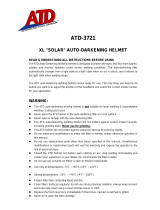 ATD Tools ATD-3721 User manual
ATD Tools ATD-3721 User manual
-
Performax AntFi X60-2 User manual
-
Harbor Freight Tools Variable Auto Darkening Welding Helmet with Metal Head Design User manual
-
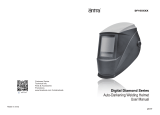 Antra Digital Diamond Series User manual
Antra Digital Diamond Series User manual
-
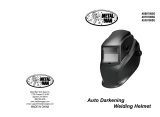 METAL MAN ABB8700SGC User manual
METAL MAN ABB8700SGC User manual
-
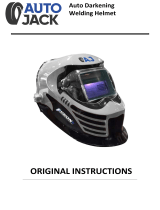 Autojack WH100W Owner's manual
Autojack WH100W Owner's manual
-
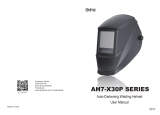 Antra AH7-X30P User manual
Antra AH7-X30P User manual
-
Lincoln Electric VIKING 700G Operating instructions
-
Lincoln Electric IM10001 User manual
-
ESAB Eye-Tech 11 Mono Welding Helmet Troubleshooting instruction
















